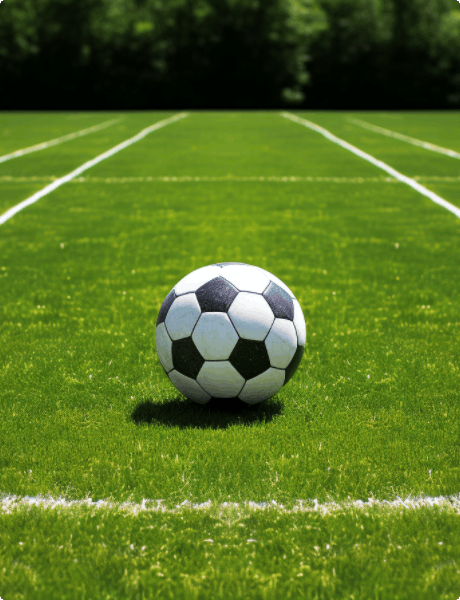
- Afrikaans
- Arabic
- Belarusian
- Bengali
- Czech
- Danish
- Dutch
- English
- Esperanto
- Estonian
- Finnish
- French
- German
- Greek
- Hindi
- Hungarian
- Icelandic
- Indonesian
- irish
- Italian
- Japanese
- kazakh
- Rwandese
- Korean
- Kyrgyz
- Lao
- Latin
- Latvian
- Malay
- Mongolian
- Myanmar
- Norwegian
- Persian
- Polish
- Portuguese
- Romanian
- Russian
- Serbian
- Spanish
- Swedish
- Tagalog
- Tajik
- Thai
- Turkish
- Turkmen
- Ukrainian
- Urdu
- Uighur
- Uzbek
- Vietnamese
Cost Analysis for Installing Artificial Grass in Playgrounds
Nov . 29, 2024 16:47 Back to list
Understanding the Costs of Installing Artificial Grass in Playgrounds
In recent years, artificial grass has gained significant traction as a popular choice for playgrounds. This trend can be attributed to its various advantages, including low maintenance, safety, and environmental friendliness. However, one of the main considerations for schools, parks, and other organizations is the cost of installing artificial grass. Understanding the investment involved is crucial for making informed decisions about playground renovations.
Initial Costs
The upfront cost of installing artificial grass can vary widely based on several factors. Generally, the price ranges from $5 to $20 per square foot, depending on the quality of the turf, the complexity of the installation, and the region in which you are located. For example, high-quality, realistic-looking turf that mimics natural grass may be on the higher end of the spectrum, whereas basic options will be more budget-friendly.
When considering the total cost, it is essential to include not just the price of the turf itself but also the costs associated with site preparation. This may involve removing existing grass (natural or artificial), leveling the ground, adding a drainage system, and possibly installing a weed barrier. Depending on the current condition of the playground site, these preparatory steps can add significantly to the overall expense.
Long-term Savings
While the initial investment for artificial grass can be daunting, it is essential to consider the long-term savings it can offer. One of the most significant advantages of artificial turf is its low maintenance requirements. Unlike natural grass, which necessitates regular mowing, watering, and fertilization, artificial grass requires minimal upkeep. This can result in substantial savings over time regarding labor and material costs.
Moreover, artificial grass is resistant to wear and tear, particularly in high-traffic areas like playgrounds. This durability means that playgrounds equipped with artificial grass will likely need fewer repairs and replacements compared to those with natural grass. This longevity can lead to cost savings over the lifespan of the turf, which can last anywhere from 10 to 15 years, depending on usage and maintenance.
artificial grass playground cost

Safety Considerations
Safety is another essential factor when contemplating the use of artificial grass in playgrounds. Many products are specifically designed for safety and impact absorption, often featuring cushioned or padded surfaces that help reduce the risk of injuries from falls. This is crucial for playgrounds where children are active and may fall frequently. While high-quality safety turf may come at a higher initial price, the potential savings in liability insurance and injury-related costs can justify the investment.
Additionally, artificial grass is typically made from non-toxic materials, which is particularly important in children's play areas. This feature can also provide peace of mind for parents and guardians, making artificial grass an appealing choice for educational institutions and public parks.
Environmental Impact
For organizations concerned about their environmental footprint, artificial grass presents both benefits and drawbacks. On the one hand, synthetic grass eliminates the need for chemical fertilizers and pesticides typically used on natural grass, making it a safer option for the environment. On the other hand, the production and disposal of synthetic materials can have negative ecological impacts. Therefore, organizations should weigh these factors carefully when considering the overall cost-benefit analysis of artificial grass.
Conclusion
In summary, the cost of installing artificial grass in playgrounds involves various factors, including initial installation expenses, long-term savings, safety considerations, and environmental impacts. While the upfront cost can be significant, the financial benefits over time, along with the enhanced safety and reduced maintenance efforts, can make it a worthwhile investment for many organizations.
As more schools, parks, and recreational facilities look to improve their playgrounds, understanding the overall cost and benefits of artificial grass will help them make informed decisions that prioritize safety, sustainability, and user experience. By carefully examining their unique needs and resources, organizations can determine whether artificial grass is the right fit for their playground enhancement projects.
-
The Benefits of Artificial Turf for Indoors
NewsJul.15,2025
-
How Artificial Grass Suppliers Ensure Quality Products
NewsJul.15,2025
-
Artificial Grass and Pets: A Space for Relaxation
NewsJul.08,2025
-
Balcony & Outdoor Decoration with Artificial Grass
NewsJul.08,2025
-
Best Indoor Artificial Grass for Home
NewsJul.07,2025
-
Best Pet Turf for Dogs: Safe & Durable Artificial Grass Options
NewsJul.07,2025
Products categories









